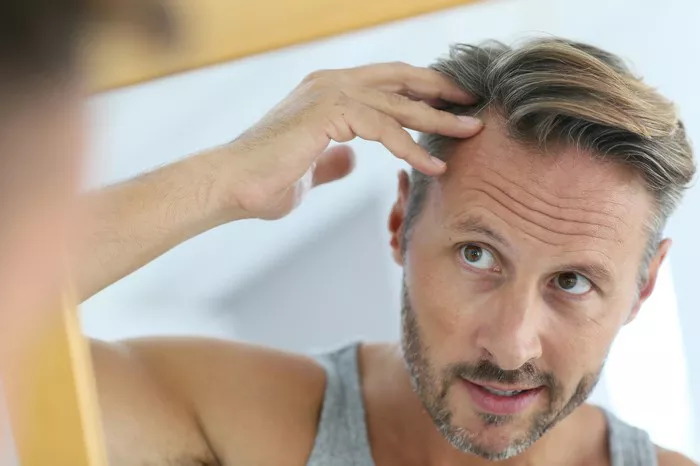Hair loss is a common concern for many individuals, and while there are various factors that contribute to this issue, the role of hormones, particularly testosterone, is a topic of significant interest. Understanding the connection between testosterone and hair loss is essential for exploring potential solutions. In this article, we delve into the question: Can hair loss from testosterone be reversed?
Understanding the Role of Testosterone in Hair Loss
Testosterone, a hormone present in both men and women, plays a crucial role in various physiological processes, including the growth and maintenance of hair. However, the conversion of testosterone into dihydrotestosterone (DHT) by the enzyme 5-alpha reductase is often linked to hair loss. DHT is a potent androgen that can contribute to the miniaturization of hair follicles, leading to a condition known as androgenetic alopecia, or male and female pattern baldness.
Is Testosterone the Sole Culprit?
It’s important to note that while testosterone and DHT are associated with hair loss, they are not the sole culprits. Genetic predisposition, age, and other hormonal factors also play significant roles. In individuals with a genetic predisposition to androgenetic alopecia, the presence of DHT can lead to the gradual thinning of hair follicles, resulting in the characteristic pattern baldness seen in men and women.
Reversing Hair Loss: Myth or Reality?
The prospect of reversing hair loss from testosterone raises a common question: Is it a myth or a reality? While there is no one-size-fits-all answer, various approaches and treatments aim to address and mitigate the effects of testosterone-induced hair loss.
1. FDA-Approved Medications
Two FDA-approved medications, finasteride (Propecia) and minoxidil (Rogaine), have shown efficacy in managing androgenetic alopecia.
Finasteride (Propecia): This oral medication works by inhibiting the activity of 5-alpha reductase, the enzyme responsible for converting testosterone into DHT. By reducing DHT levels, finasteride can slow down hair loss and, in some cases, promote hair regrowth. It is typically prescribed for men and may not be suitable for women, especially those of childbearing age.
Minoxidil (Rogaine): Available as a topical solution or foam, minoxidil is applied directly to the scalp. While the exact mechanism is not fully understood, minoxidil is believed to stimulate hair follicles, increase blood flow, and prolong the anagen (growth) phase of the hair cycle. It is approved for both men and women.
2. Low-Level Laser Therapy (LLLT)
Low-level laser therapy is a non-invasive treatment option that uses red or near-infrared light to stimulate hair follicles. It is available in various forms, including laser caps, helmets, and combs. LLLT is thought to increase blood flow, reduce inflammation, and promote cellular activity in the scalp, potentially leading to hair regrowth.
3. Platelet-Rich Plasma (PRP) Therapy
PRP therapy involves the extraction and concentration of platelets from the patient’s blood, which are then injected into the scalp. Platelets contain growth factors that may stimulate hair follicles, improve blood circulation, and encourage hair regrowth. While research on PRP for hair loss is ongoing, some studies suggest positive outcomes.
4. Hair Transplantation
For individuals seeking a more permanent solution, hair transplantation is a surgical option. During the procedure, hair follicles are typically harvested from the back or sides of the scalp (areas less susceptible to DHT) and transplanted to areas experiencing hair loss. This approach can provide a natural-looking result, but it may not be suitable for everyone.
Lifestyle Changes and Nutritional Support
In addition to medical interventions, adopting a healthy lifestyle and incorporating specific nutrients into your diet can support overall hair health. A balanced diet rich in vitamins, minerals, and proteins is essential for promoting hair growth and minimizing hair loss. Consultation with a healthcare professional or a registered dietitian can provide personalized guidance on nutritional support.
The Importance of Timely Intervention
While various treatments and interventions exist, the key to addressing testosterone-induced hair loss is early intervention. Seeking guidance from a healthcare professional or a qualified dermatologist can help determine the most suitable course of action based on individual factors such as age, gender, overall health, and the extent of hair loss.
See Also: Choosing the Best Khadi Shampoo for Hair Loss: A Simple Guide
Conclusion: A Multifaceted Approach
In the pursuit of reversing hair loss from testosterone, it’s crucial to approach the issue with a multifaceted strategy. Understanding the role of testosterone and DHT, exploring FDA-approved medications, considering non-invasive therapies like LLLT and PRP, and, in some cases, opting for surgical interventions like hair transplantation can collectively contribute to managing and mitigating the effects of testosterone-induced hair loss.
Individual responses to these interventions may vary, and it’s essential to set realistic expectations. Consulting with a healthcare professional ensures personalized advice tailored to your specific needs, ultimately guiding you toward a solution that aligns with your goals for hair health and regrowth.


